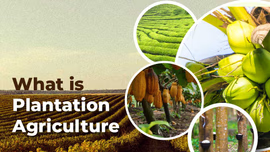
Summer season signals the arrival of delicious summer fruits in our kitchens. Summers in India are particularly harsh. However, nature also has a way of providing us with a solution in the form of healthy and tasty summer season fruits that keep us hydrated while still being nutritionally dense.
Keep reading to learn more about the top 10 summer season fruits and how these fruits keep you healthy and hydrated.
Table of Contents
Introduction
India has wide range of fruit diversity. This mainly is due to different regions throughout the country experiencing varying weather conditions allowing for diversity in fruits and vegetables cultivation. Fruits such apples, apricots, and almonds are primarily grown in the colder regions of north India, whereas mango and Ber are more prevalent in the hotter regions of the country such as Uttar Pradesh, Maharashtra and Rajasthan. India is also the largest exporter of exotic fruits in the world. Between 2023-2024, India exported 1.132 billion worth of fresh fruits, representing the country’s rich agricultural heritage and the integral role fruit plays in its culinary landscape.
Top 10 Summer Fruits in India
Mango (Aam)
Botanical Name: Mangifera indica
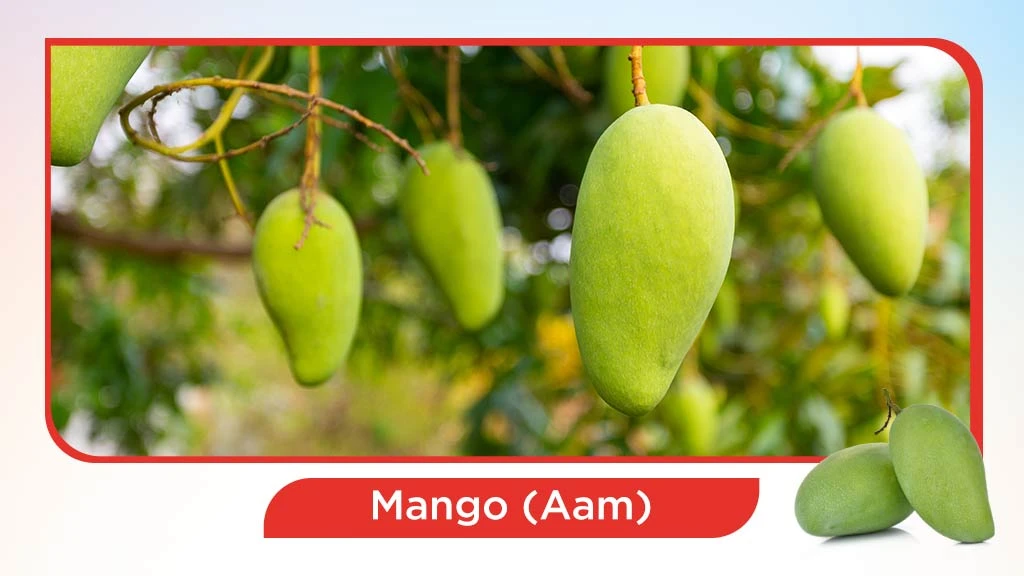
Mango is a popular summer fruit in India and often regarded as the 'King of fruits'. It is grown in tropical and subtropical regions of Uttar Pradesh, Andhra Pradesh, Bihar, Karnataka and West Bengal where mango production is the highest. The fruit has an aromatic sweetness and its antioxidant properties which make it a popular choice of summer fruit. In the culinary front, mango is used to make pickle and chutney, mango shakes, desserts etc. There are over 1000 varieties of mangoes grown in India alone, with popular varieties including Alphonso (Ratnagiri, Maharashtra), Kesar (Gujrat), Langra (Uttar Pradesh), Dasheri (Uttar Pradesh), and Banganapalli (Andhra Pradesh).
Watermelon (Tarbooz)
Botanical Name: Citrullus lanatus

Watermelon is a fruit widely cultivated across India during summer months, particularly in the states of Rajasthan, Maharashtra, Karnataka and Uttar Pradesh. It is a member of the 'Curcurbitaceae' gourd family. Popular varieties include of watermelon include ‘Sugar Baby’, Arka Muthu’ and ‘Arka Aishwarya’, which are valued for their deep red flesh and high sweetness. Watermelons are fruits are also high in water content hence considered best for tropical climates. Nutritionally, the fruit is rich in vitamin A and C, antioxidants like lycopene and dietary fibre.
Muskmelon (Kharbooz)
Botanical Name: Cucumis melo
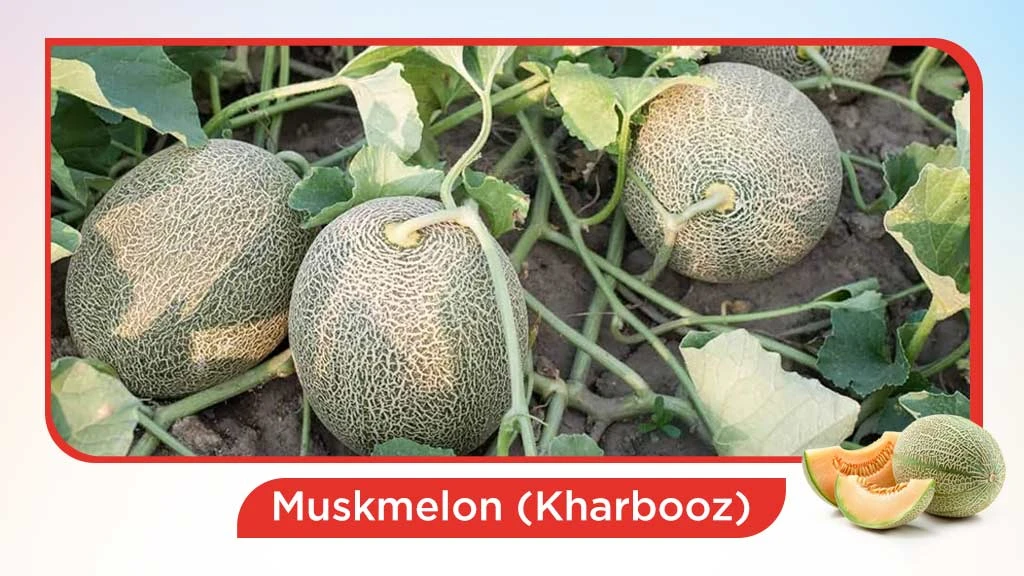
Muskmelon or Kharbooz is a fruit rich in water content and makes it perfect fruit for hot summer days to keep your body cool and hydrated. It is also a good source of potassium, which helps to maintain your electrolyte balance. Popular varieties of Muskmelon include ‘Galia’, ‘Annapurna’ and ‘Honey Dew’. Muskmelon’s are grown in the arid plain regions of Punjab, Rajasthan, Gujarat and Uttar Pradesh. These fruits are popular due to their succulent sweetness and fragrance. Muskmelons are nutritionally dense fruits, which makes them perfect for skin health and immunity.
Jackfruit (Kathal)
Botanical Name: Artocarpus heterophyllus
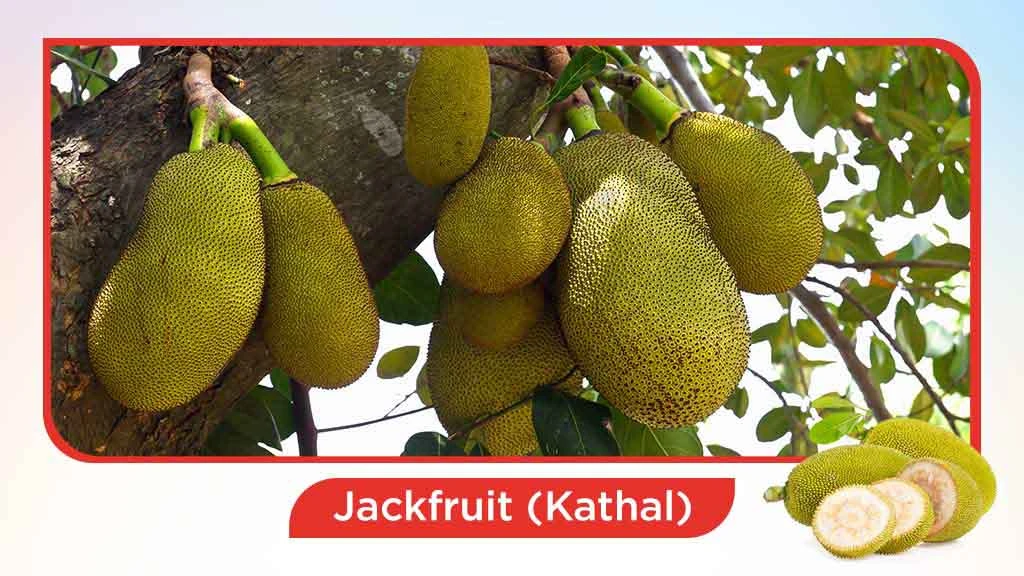
Jackfruit, native to India, is the world's largest tree-borne fruit. It has been a staple diet for generations in regions such as Kerala, Karnataka, West Bengal, and Tamil Nadu, where it is called kathal in the north and chakka in Kerala. Jackfruit grows best in warm, humid regions. It is often eaten ripe, or the unripe fruit is used as a plant-based meat substitute in curries and biryanis and is sometimes referred to as "vegetarian meat". Popular Indian varieties include 'Black Gold', 'Varikka', 'Chakka', and 'Burlier'. It has an outstanding nutritional profile, including high levels of Vitamin C, dietary fibre, potassium, and antioxidant characteristics that promote heart health, digestion, and immunity.
Black Plum (Jamun)
Botanical Name: Syzygium cumini
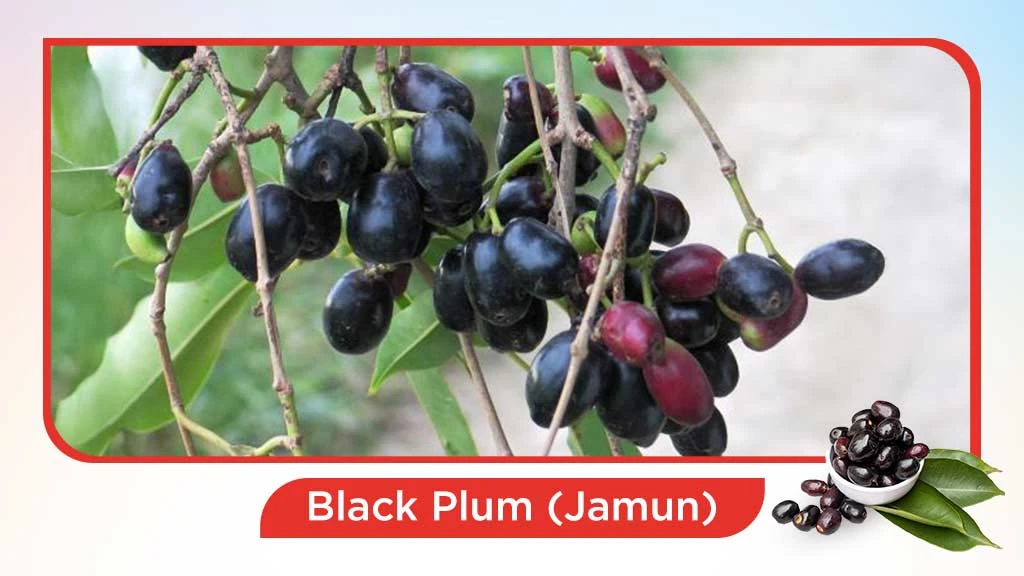
Jamun or Black plum is an important summer fruit, associated with numerous health and medicinal benefits. The fruit is dark purple in colour, and it has a distinct sweet taste with sour and astringent undertones. It is an especially popular fruit due to its refreshing flavor and is often eaten fresh or used in juice for medicinal or ayurvedic purposes. Black Plums are also low in calories and are an excellent source of vitamin C, carbohydrates, protein, iron, magnesium and potassium. It contains jamboline which helps in stabilizing glucose levels and hence a superhero fruit for individuals with diabetics. Jamun is primarily grown in norther or central parts of India, with Uttar Pradesh, Maharashtra, Gujrat being major producers. The most common varieties include: ‘Kala Jamun’, Raj Jamun’ and ‘Narendar Jamun’. It is an excellent source of bioactive components such as flavonoids, polyphenols, antioxidants, iron, and vitamin C.
Mulberry (Sahtoot)
Botanical Name: Morus alba
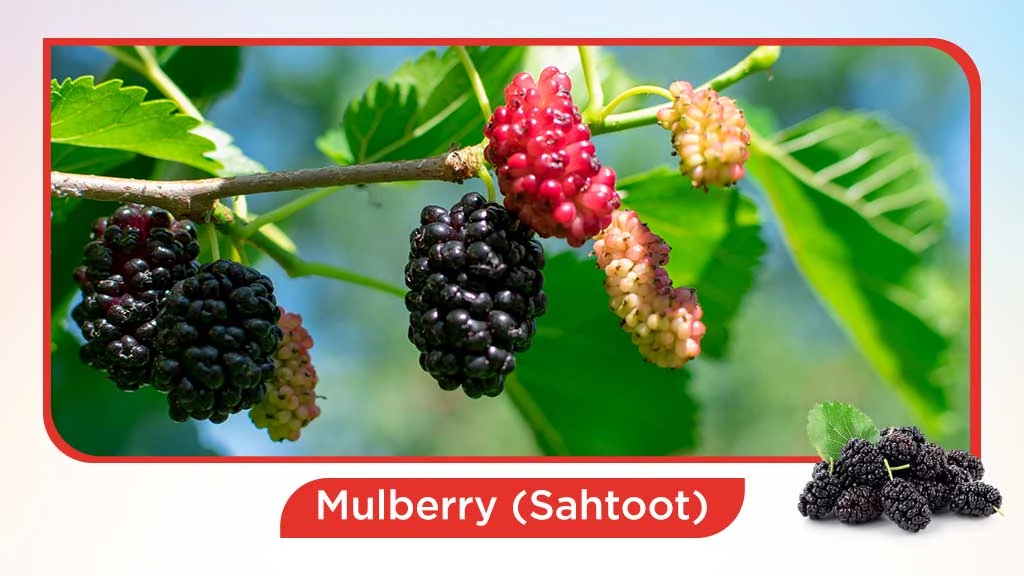
Mulberry, commonly referred to as Sahtoot, is a beloved summer fruit in India. Mulberries are found in a variety of colors which are red, pink, white, and black. These fruits are available for a short period twice a year from March to May and then again from October to November. They are small in size and have a juicy-tart flavour. These fruits are especially popular for being delicious and nutritious. Mulberries contain iron, vitamin C, and compounds. Eating them can help reduce cholesterol, blood sugar, and cancer risk.
Litchi
Botanical Name: Litchi chinensis
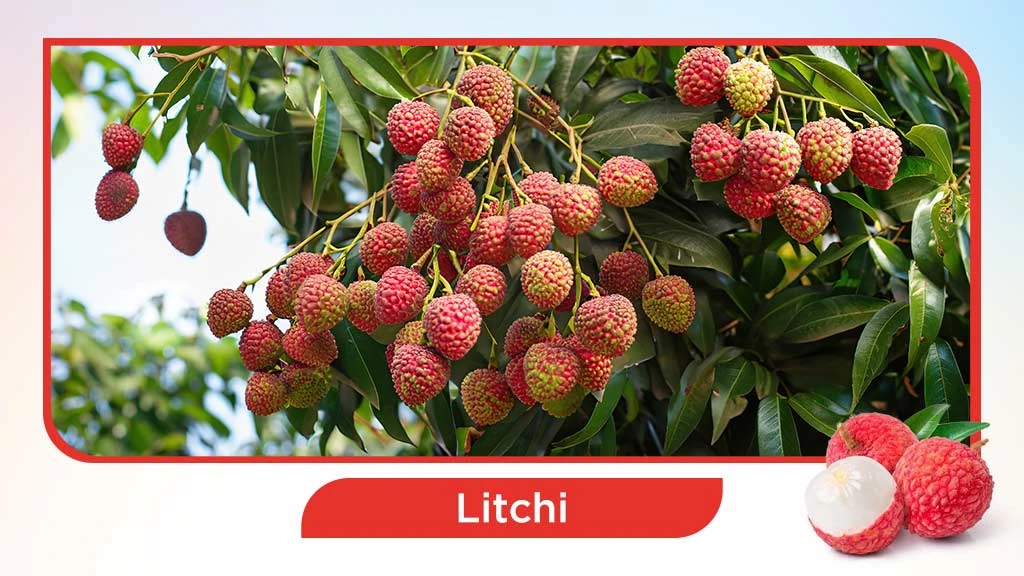
The litchee is sub-tropical fruit belonging to family Sapindaceae, is believed to have originated in China. The litchi fruit is covered by a leathery rind which is pink to strawberry-red in colour and rough in texture. When the rind is removed, the fruit inside is white, translucent fruit that is oval, nearly oval or round. It grows to about an inch-and-half, is firm and juicy, sweet in flavour, fragrant and delicious.
The fruit is available in most Indian markets during the early monsoon. Litchi is primarily grown in the state of Bihar, which accounts for more than 70% of the country’s lichi production. Other cultivating states include Tripura, West Bengal, Uttar Pradesh, Punjab, and Haryana. Common varieties include ‘Early Bedana’ (Early Seedless), Ajhauli, Bombai, Gullabi, Ellaichi and Swarna Roopa. Litchee is a fruit that is rich in nutrients and antioxidants that promote good health.
Plum (Aloo Bukhara)
Botanical Name: Prunus domestica
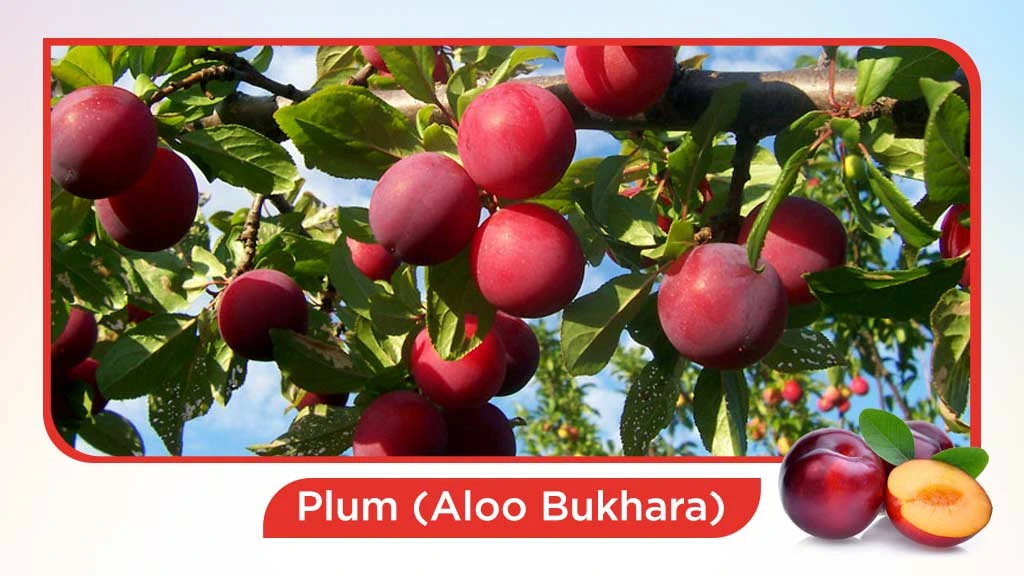
Plums are locally known as Aloo Bukhara. Plum fruit has a thin, smooth outer skin that can range in color from yellow, red, purple, or even black depending on the variety. These fruits grow in the colder states of India, Himachal Pradesh, Jammu & Kashmir and Uttarakhand. Plum has a sweet-tart flavor and juicy flesh and are usually enjoyed fresh or dried to make prunes or jams and chutneys. Plums are rich in vitamin C, which is an antioxidant that also helps the body produce collagen. Plums are also known to be a good sources of fiber, that promotes a healthy digestive system. Different varieties of plum available in India are Kala Amritsari, Alucha, Golden Japan, Santa Rosa and Satluj Purple.
Water Apple (Jammrul)
Botanical Name: Syzygium samarangense
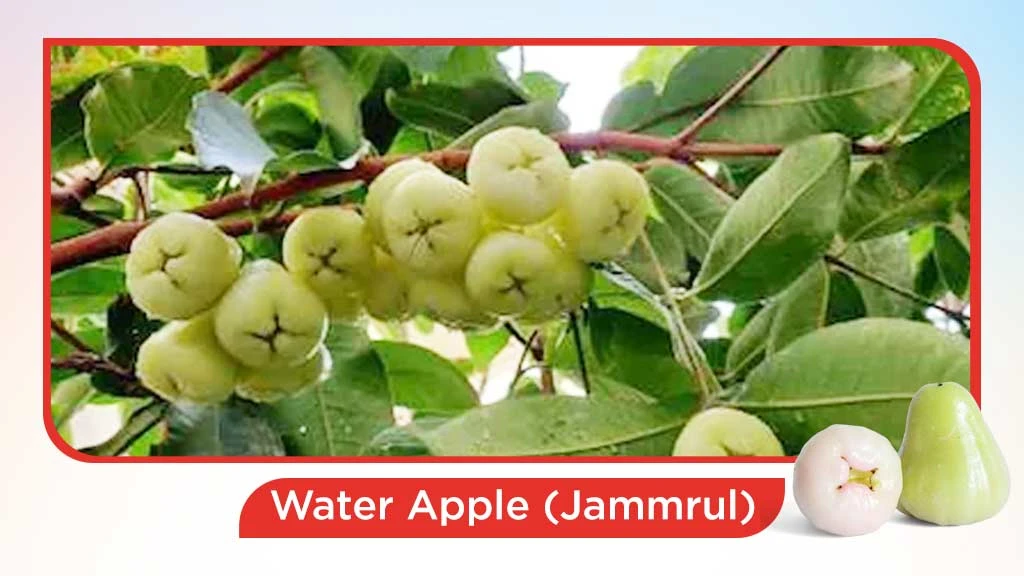
Water apples are also known as watery rose apple or simply as ‘rose apple’. It is a fruit native to Southeast Asian countries and to certain tropical regions of India. In parts of India, it is Commonly referred to as "Chambakka" or “Pani Seb” in Hindi, “Jambu” or “Panneer Naval” in Tamil, “Jambakka” in Malayalam and ‘jaam’ in Marathi. It is a succulent, delicious fruit popular for its high-water content. Water apples have a distinct look and taste. They are small, bell-shaped fruits, often with glossy, thin skin that can range in color from pale green to deep red. Their flesh is white or pink and extremely juicy. The taste is generally sweet, with some varieties offering a mild, floral, or rose-like aroma. In India, water apples, come in a few main varieties distinguished by color and taste. Water apples are low in calories and high in water content (over 90%). It is a rich source of Vitamin C, B, and polyphenols.
Wood Apple (Bael)
Botanical Name: Aegle marmelos
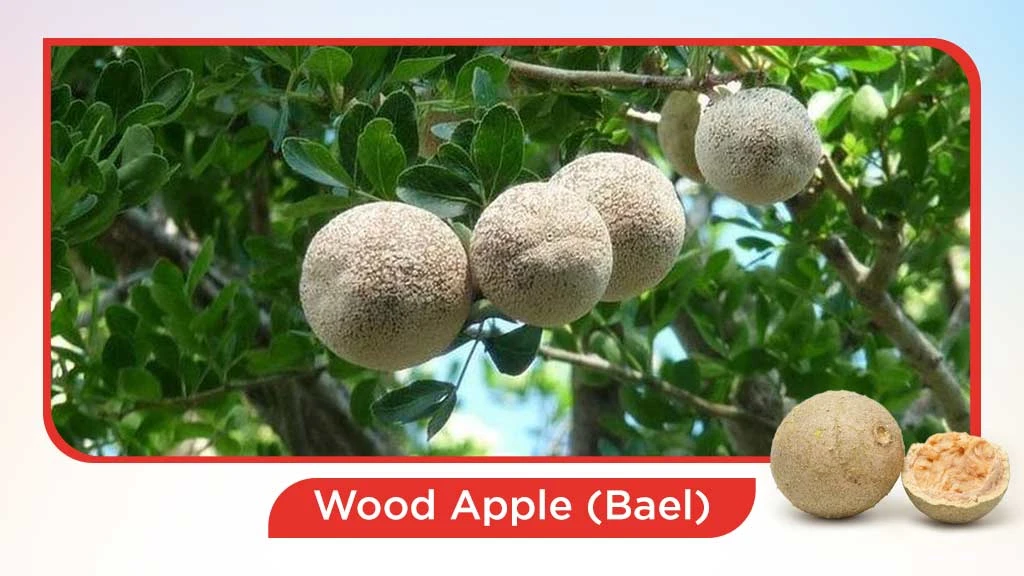
Bael is an Indian native tree spread in many regions of the world, commonly known by the names wood apple and stone apple. Being native to India and having originated in central to northern parts of India, it is commonly found in tropical and subtropical regions. Bael fruit has a hard, woody exterior that's typically grey or yellow and houses a sweet, thick, orange-colored pulp. The pulp is aromatic and has a unique sweet and tart flavor profile. Bael is found growing along foothills of Himalayas, Uttar Pradesh, Bihar, Chhattisgarh, Uttaranchal, Jharkhand, Madhya Pradesh, the Deccan Plateau and along the East Coast. Bael fruits are a power punch of various nutrients like beta-carotene, protein, riboflavin and vitamin C. It is loaded with vitamin B1 and B2, thiamine, riboflavin, niacin, carotene and possesses good amounts of minerals like calcium, potassium, fiber and good fats.
Conclusion
Eating summer fruits is one of the most effective methods to stay cool, hydrated, and healthy during the hot season. These fruits are sweet and high in nutrients that your body requires during the summer heat. Including these fruits in your regular diet is an easy way to stay cool and hydrated during the summer.
So, the next time the sun gets too hot, grab a bowl of these delicious fruits and let nature do the job of cooling for you!
Frequently Asked Questions On Top 10 Refreshing Summer Fruits in India
1. Which are the 5 fruits that grows in the summer season?
5 popular fruits that grow in summer are: Mango (Aam) Watermelon (Tarbooz) Muskmelon (Kharbooz) Jackfruit (Kathal) Black Plum (Jamun)
2. Which fruit is the king of summer?
Mango is considered the king of summer fruits.
3. Which summer fruit in India has the highest water content?
Water melon has the highest water content of 92%
4. Which summer fruits in India are rich in Vitamin C?
Mangos and Watermelon are high in Vitamin C content.


Related Blogs



